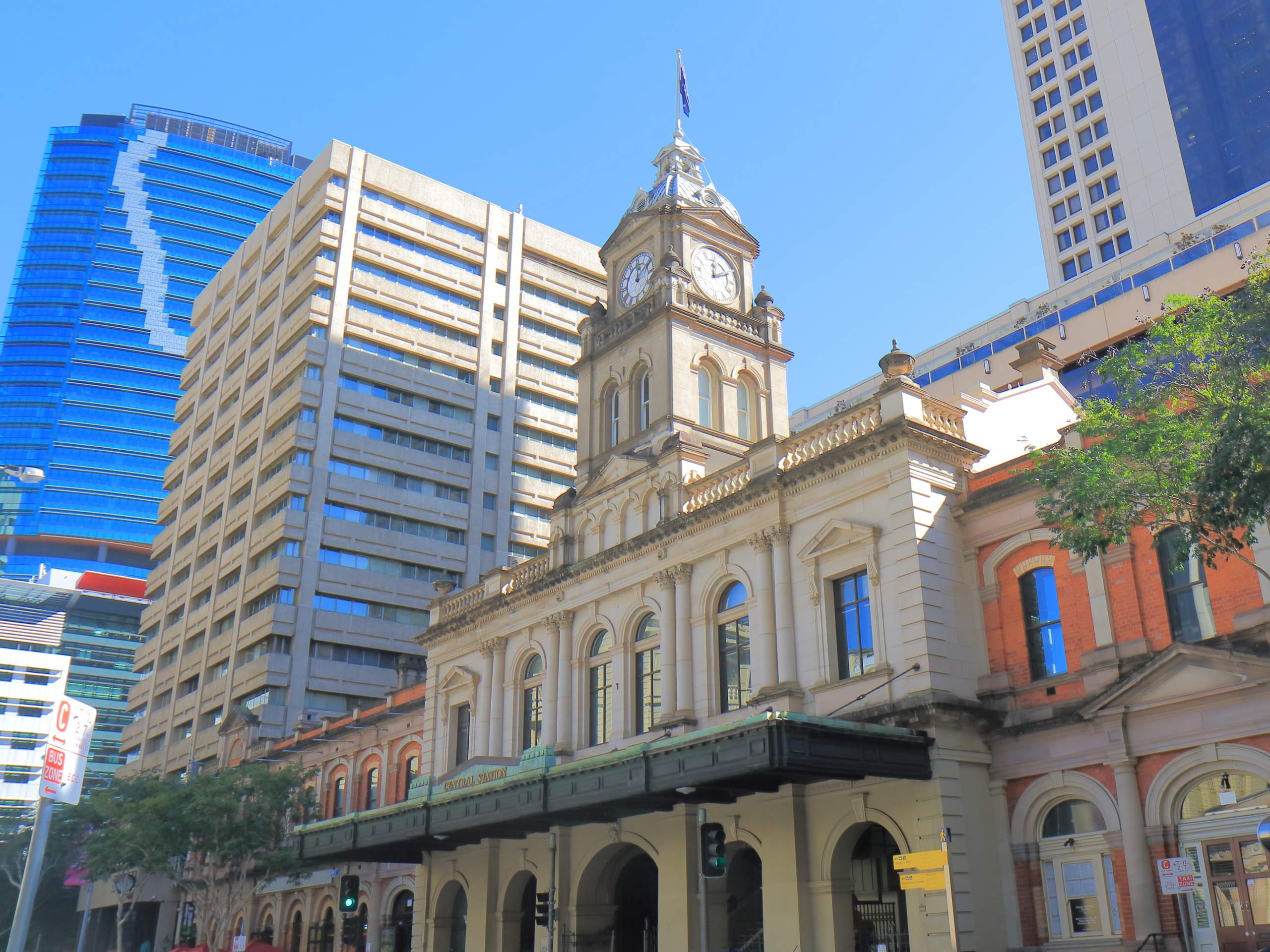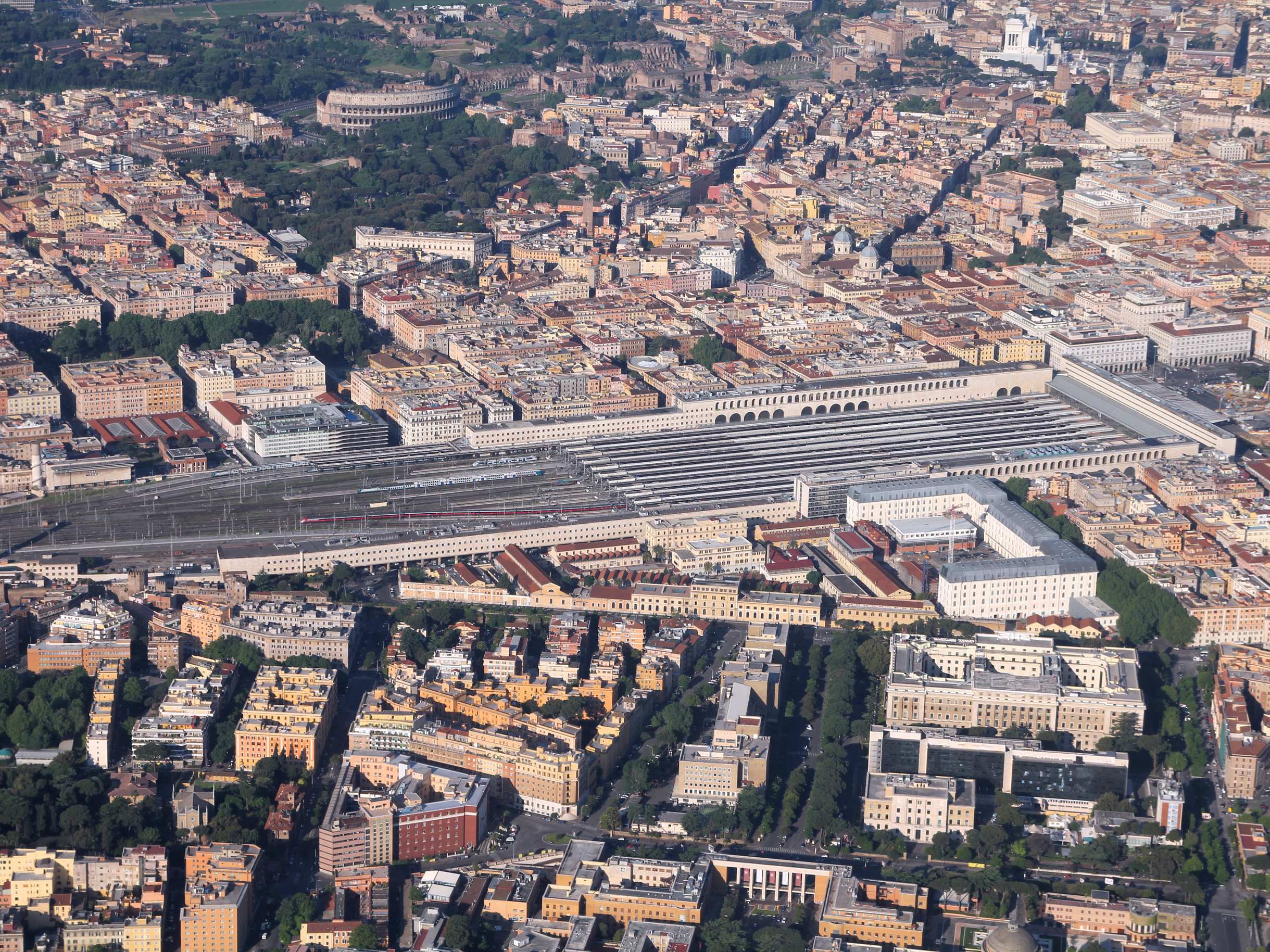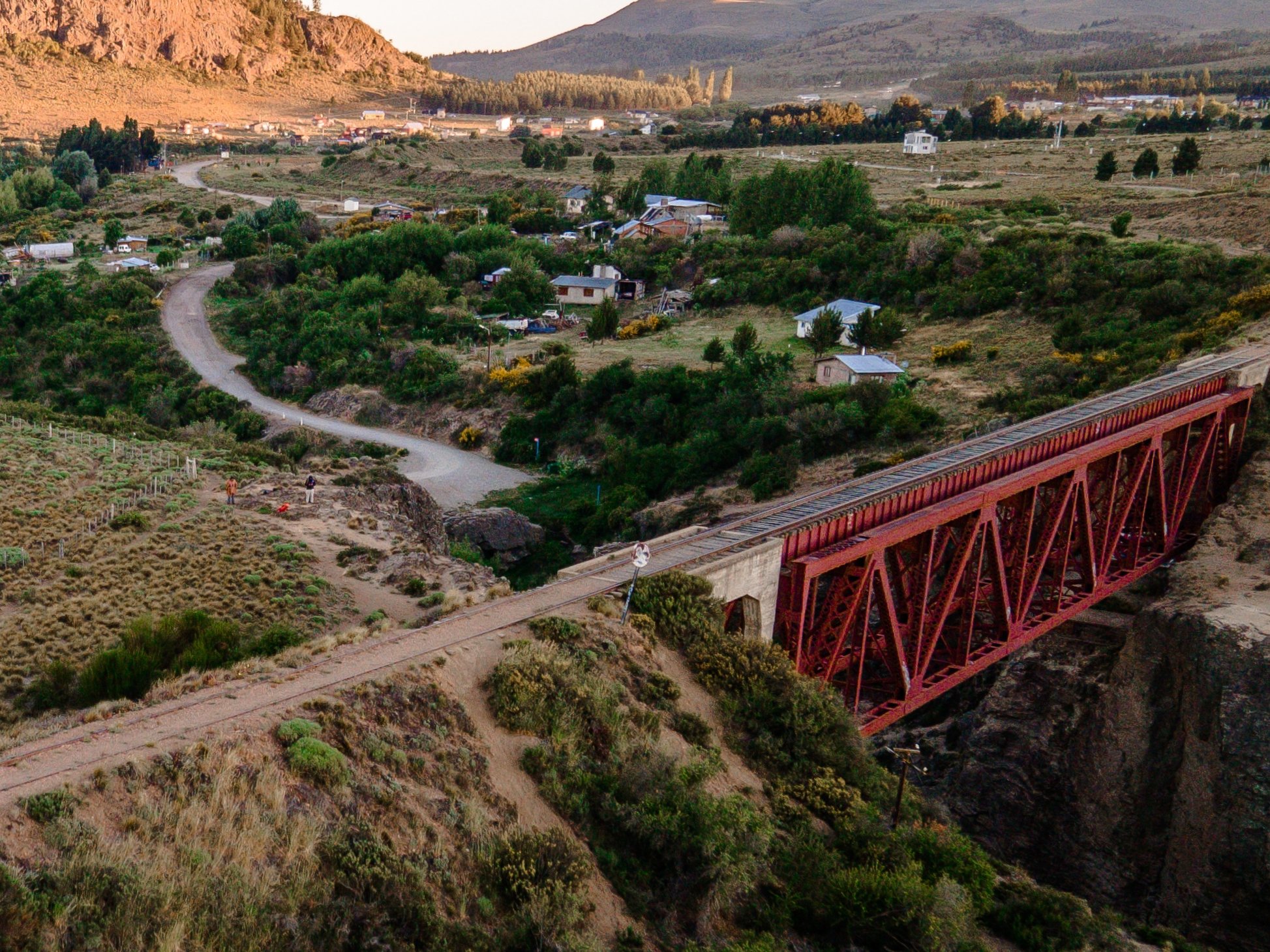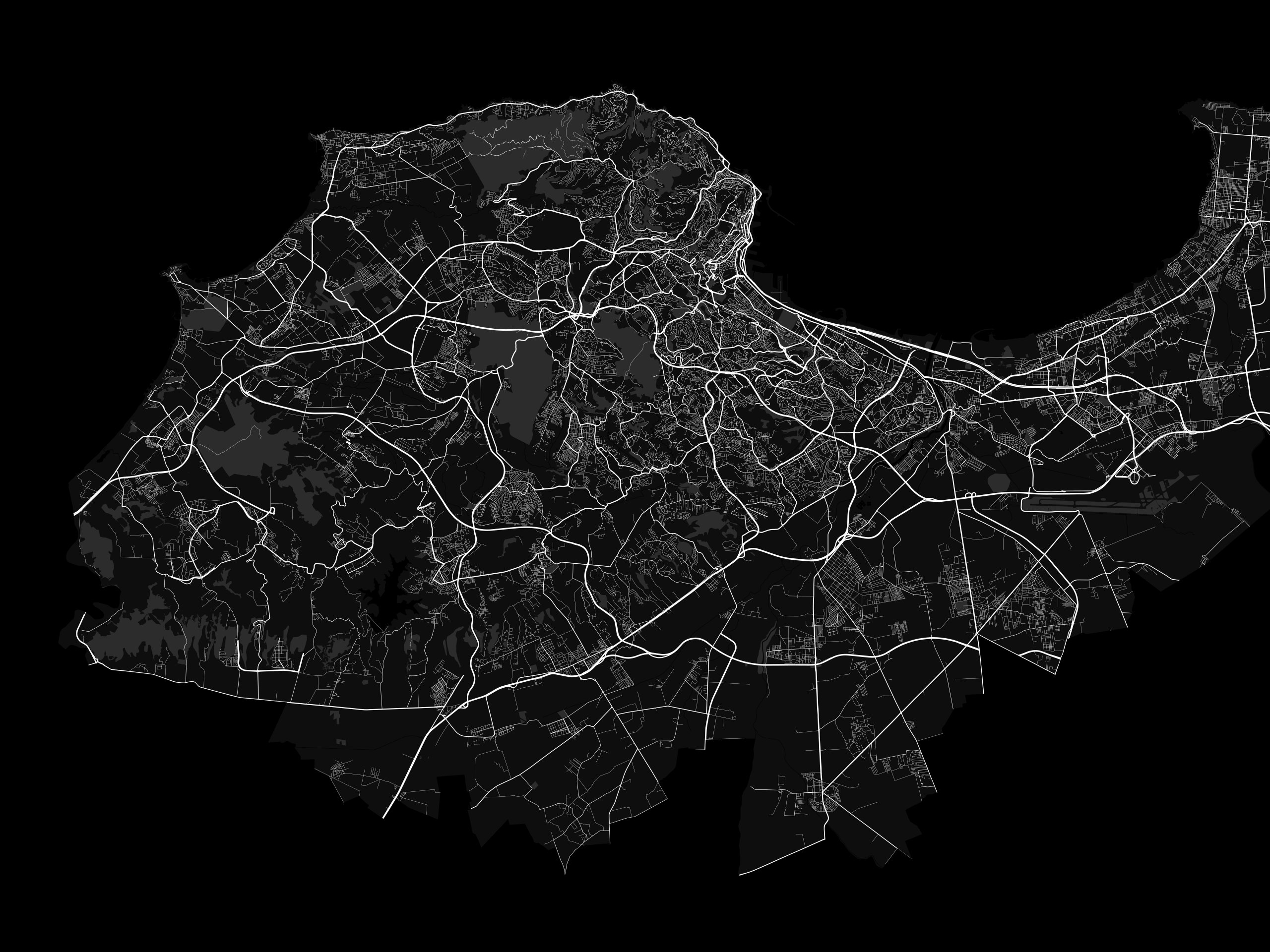
ADVANCED TRAINING AND SIMULATION
The Queensland Rail Limited is the company managing the railway infrastructure of Queensland, Australia, which develops for thousands of kilometers in the surroundings of the city of Brisbane. Lift was engaged in some training activities for a more efficient use of the microsimulation software OpenTrack and it also created the mesoscopic model of the whole railway network of Queensland. Besides, Lift was involved in the modelling of the so-called “North Coast Line”, which extends from Brisbane to the North of Australia for 1400 kilometers.
For more information on the line see here
Our tasks:
– Advanced training of OpenTrack users
– Mesoscopic simulation of the entire Queensland railway network
– Microscopic simulation of the North Coast Line
– Training seminar in Brisbane

MODELING, SIMULATION AND CAPACITY-FREQUENCY TRADE OF SOLUTION
The main aim of this study was to increase passenger throughput in case of social distancing due to pandemic. A single platform has been considered with two related tracks. Thanks to the integration between a discrete-event simulator and optimization tools, a wide range of combinations of train schedule, occupancy and management rules have been explored and a Pareto front of optimal solutions has been identified.
Our tasks:
– Model development
– Simulation and optimization

The railway node of Florence is one of the most important ones of the Italian railway network on the north-south line Rome-Naples and it constitutes a complex node due to the presence of both regional short-haul services for commuters and of long-haul high-speed services. In such context, congestion problems currently occur in some hours of the day. Lift was appointed to evaluate the potential beneficial effects generated by the implementation of the ERTMS system for train distancing in the considered node.
Our tasks:
– Microscopic modelling of the whole node of Florence in various signalling scenarios
– Stochastic simulations
– Comparison among different scenarios in terms of train punctuality and frequency

The Brenner railway line represents the main north-south freight corridor between Italy and Europe and it accommodates large freight traffic volumes, which are likely to further increase following the short-term opening of the Brenner Base Tunnel. Such railway network is used also to perform regional services with a regular interval timetable, which the local administration is intended to enhance. In light of this expected growth of both freight and passenger train flows, Lift was engaged in the definition of some scenarios for the technological upgrading of the railway infrastructure.
Our tasks:
– Microscopic modelling of railway traffic from Verona to the Brenner
– Stochastic simulation
– Identification of trade-off solution between capacity and punctuality in relation to traffic increases

The objective of the simulation of the Sardinian railway network consisted in the targeted selection of the best scenario of intervention for the infrastructural and technological upgrading necessary to define an operations model enabling the combination of high-speed regular services between the Northern and the Southern part of the island with regional short-haul services. The main issue of such case study was represented by the fact that most of the considered railway network is constituted by single-track lines and is featured by winding planometric and altimetric characteristics.
Lift adopted the microsimulation to identify the essential upgrading interventions addressing the creation of a specific operations model which could successfully serve the whole railway transport system at hand.
Our tasks:
– Microscopic modelling of the entire regional railway network according to different scenarios, not only related to various infrastructural and upgrading interventions, but also in terms of diverse train timetables
– Comparison among developed scenarios
– Stochastic simulation
– Optimization of investments

New draft timetables have been proposed and simulated according to step by step development of the rail network in Chile.
Over the Santiago-Concepcion line the focus was on passenger services (both fast long distance trains and regional/commuters short distance services) while on the corredores centrales the main attention was on freight services from/to international ports over the Pacific Ocean.
Micro and meso simulation models have been used to assess a huge number of alternative scenarios.

Lift was involved in two different projects aimed at using railway services in support to tourist mobility, namely both at the border between Italy and Slovenia and in the service of cruise ships mooring in the Port of Trieste. In the former case, Lift created a possible train timetable for some new connections between Italy and Slovenia, in correspondence to the border station of Villa Opicina, and it assessed the most suitable tourist attractions making such mobility services attractive.
In the second case, Lift identified and scheduled additional high-speed train services between the main Italian demand generator nodes and the Port of Trieste.
Our tasks:
– Definition of the best train timetables according to tourist transport needs
– Compatibility analysis of new proposed services and the existing ones
– Stochastic simulation

A new railway line will connect Chile and Argentina through the Andes, creating a fast link between the Pacific and Atlantic Oceans, and the most vital economic centers of the regions. The hearth of the very ambitious project is a 54 km long tunnel, but the entire corridor appears as one of the world’s most complex infrastructures, stretching over a region with extremely variable climate conditions with a high number of tunnels and viaducts.
LIFT was asked to define and test the requirements to the layout of the entire line in order to meet the expected demand and with different alignments.
Our tasks:
– Preparation of the micro-simulation model;
– Definition of the speed limits and performances;
– Specification of technologic requirement;
– Simulation of the benefits of dynamic crossing and partial double tracks;
– Definition of an optimized layout.Estimation of the impact of failures;
– Timetable robustness estimationComparison of various scenarios.

Milan is the economic capital of Italy, at the heartof one of the most dynamic regions in Europe, with more than 9 million inhabitants. By 2015, most railway services will be improved, to increase the market share of public transport. To select the crucial interventions on the infrastructure and evaluate the performance of different timetable structures, the Italian Infrastructure Manager RFI has commissioned LIFT the evaluation of short- and long term scenarios by means of calibrated stochastic simulation.
Our tasks:
– Preparation of the micro-simulation model;
– Calibration and validation of stochastic simulation using real data;
– Preparation of infrastructure improvement scenarios;
– Definition of a timetable draft;
– Simulation and analysis of results (multiple simulations);
– Identification bottlenecks and definition of further improvements to meeting the requirements of the regional administration.

An High Speed Line connects Turin, Milan, Bologna, Florence, Rome and Neaples, stretching for over 1000 km and acting as a ‘vertical spine’ for the country, linking most of the major cities and serving around 65% of the country’s population.
In order to maximize the number of trains on the line maintaing without hindering the reliability standards, detailed a careful timetable planning was required, considering the most common incidents and infrastructure works along the line.
In a follow-on study, a number of different alternatives for the high-speed Florence junction have been simulated and evaluated considering the capacity, the running times and the delay propagation during the works to build the junction.
During the activation of the new interlocking system in Bologna main station, at the hearth of the Italian network, the traffic was strongly reduced and a number of trains were re-routed to the freight bypass. LIFT carried out the extensive simulation which led to the definition of the temporary timetable.
Our tasks:
– Preparation of the micro-simulation model
– Calibration and validation of stochastic simulation using real data
– Definition and simulation of delay scenarios
– Simulation of dispatching criteria
– Analysis of results: expected robustness

The Corridor X is the main roadway and railway communication axis in Croatia and one of the cornerstones of community transportation policy as it will connect Germany and Austria with Greece and Turkey. In detail, a technical and financial analysis has been carried out on the Croatian part of the railway Corridor X (270 km). Starting from a transport analysis and an update of the previous master plan, this analysis leads to the identification of infrastructure construction priorities and the definition of technological standards.
Our tasks:
– Modelling the infrastructure;
– Defining and simulating future offer models;
– Identifying the main bottlenecks and determining a series of improvements meeting the requirements of the national Masterplan;
– Definition of the signaling and infrastructure layouts for each scenario.

The Serbian Railways are improving the Belgrade – Bar railway line, which connects the Danube River and the Adriatic Sea. The line connects the Serbian capital and the Montenegro’s Adriatic port with a mountainous track designed in the 1950s and activated in 1976. After a long period of poor maintenance and the absence of upgrade interventions connected with the wartime conditions of the region, the Belgrade-Bar is now jointly managed by the Serbs and Montenegrins and was in part reactivated thanks to international funding.
Our tasks:
– Modelling the infrastructure;
– Defining and simulating future operations;
– Identifying the main bottlenecks and determining the short, medium and long term interventions to be performed;
– Detailed study of the interventions on civil works and technological systems.

Alger is the capital and largest city in Algeria, rapidly growing and incorporating adjacent towns in an agglomeration of about 3,5 million people.
The Algerian Infrastructure Manager, SNTF, is completely renewing and improving the existing network to offer fast and efficient connection among the major cities.
The region around Algiers is the core of these ambitious plans, that include a new high speed line from across the region and other improvements that will allow to quadruple regional and sub-urban services.
In order to right-dimension the network avoiding ineffective expenses, LIFT planned the infrastructure layout and a timetable draft and tested them using micro-simulation iteratively, to obtain an optimal equilibrium between number of trains and reliability expectable in real operations.To start taking advantage of the new rolling stock and of the first interventions to be put into service, LIFT also developed a short-term regular interval timetable that allowed doubling the number of services on the existing network.
Our tasks:
– Preparation of the infrastructure model;
– Definition of a long-term timetable draft;
– Definition of a short-term regular interval timetable;
– Development of the infrastructure and interlocking layout;
– Stochastic micro-simulation of all scenarios.

Roma Tiburtina plays a fundamental role for railway traffic in Italy, since it is the door of Rome for all trains coming from Northern Italy and the future stop of most high speed services. During the construction of the new station and of a new underground road it was necessary led to strong speed restrictions and track closures that could have dramatic effects on reliability of railway traffic all over Italy.
LIFT was commissioned to estimate the effects of restrictions on punctuality and on delays with highest detail, by deploying stochastic micro-simulation of the entire region using the real delay, running and stop time distributions. On that basis, LIFT was asked to plan a temporary timetable to minimise the impact of delays on the different phases of the works.
Our tasks:
– Preparation of the micro-simulation modelCalibration and validation of stochastic simulation using real data;
– Stochastic simulation of various restrictions;
– Analysis of results: expected punctuality;
– Definition of a temporary timetable;
-Simulation of the temporary timetable and comparison with the regular one.
2020
2019
2018
2017
2016
2015
2014
2013
2012
2011
2010
2009
2008
2007